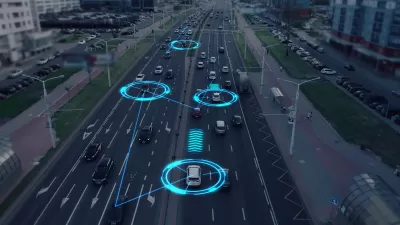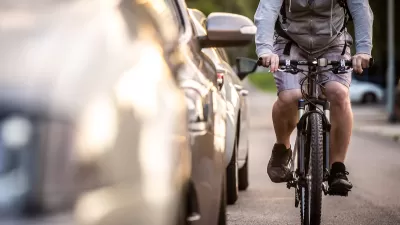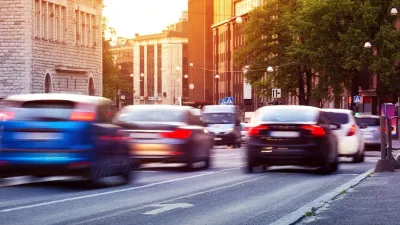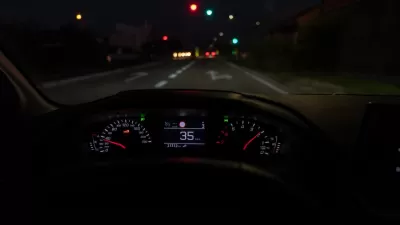The technology known as V2X could prevent crashes and save lives by allowing vehicles to communicate with each other and road infrastructure.

The U.S. Department of Transportation is releasing a plan for the deployment of technology that allows cars to ‘talk’ to each other, potentially preventing thousands of crashes.
As Joel Rose explains in a piece for NPR, the tech, known as vehicle-to-everything, allows vehicles to exchange information with other vehicles and sensors including roadway infrastructure. “Users could send and receive frequent messages to and from each other, continuously sharing information about speed, position, and road conditions — even in situations with poor visibility, including around corners or in dense fog or heavy rain.”
While the National Highway Traffic Safety Administration (NHTSA) was poised to mandate the technology during the Obama administration, the proposal was later dropped. The new plan could reduce the “regulatory uncertainty” that has hindered the deployment of V2X. “In the short-term, the plan aims to have V2X infrastructure in place on 20% of the National Highway System by 2028, and for 25% of the nation's largest metro areas to have V2X enabled at signalized intersections.”
FULL STORY: U.S. presses the ‘reset button' on technology that lets cars talk to each other

Trump Administration Could Effectively End Housing Voucher Program
Federal officials are eyeing major cuts to the Section 8 program that helps millions of low-income households pay rent.

Planetizen Federal Action Tracker
A weekly monitor of how Trump’s orders and actions are impacting planners and planning in America.

Ken Jennings Launches Transit Web Series
The Jeopardy champ wants you to ride public transit.

Crime Continues to Drop on Philly, San Francisco Transit Systems
SEPTA and BART both saw significant declines in violent crime in the first quarter of 2025.

How South LA Green Spaces Power Community Health and Hope
Green spaces like South L.A. Wetlands Park are helping South Los Angeles residents promote healthy lifestyles, build community, and advocate for improvements that reflect local needs in historically underserved neighborhoods.

Sacramento Plans ‘Quick-Build’ Road Safety Projects
The city wants to accelerate small-scale safety improvements that use low-cost equipment to make an impact at dangerous intersections.
Urban Design for Planners 1: Software Tools
This six-course series explores essential urban design concepts using open source software and equips planners with the tools they need to participate fully in the urban design process.
Planning for Universal Design
Learn the tools for implementing Universal Design in planning regulations.
Heyer Gruel & Associates PA
Ada County Highway District
Institute for Housing and Urban Development Studies (IHS)
City of Grandview
Harvard GSD Executive Education
Toledo-Lucas County Plan Commissions
Salt Lake City
NYU Wagner Graduate School of Public Service





























